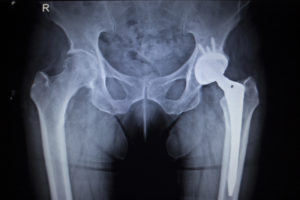Joint Replacement Surgery: Why It Shouldn’t Always Be a Last Resort
Joint replacement surgery can be life-changing for those with painful arthritis—and it may be a better option earlier rather than later. Plan ahead to make your recovery more comfortable.
Many of my patients undergo total knee replacement, and the procedure can result in significant functional improvement for older adults affected by knee osteoarthritis. Joint replacement surgery in general is usually considered only after other treatment options have been exhausted, but it’s an area where I feel it is better to act sooner rather than later. You don’t have to wait until you’re in constant pain and unable to do anything you enjoy.
The idea that replacing the affected joint should be a last resort may condemn you to years of discomfort and reduced mobility, and also means that you may go into surgery in worse shape, which can slow your recovery. You should certainly try physical therapy, weight loss, and medications to see if you’re able to get your pain under control. But if this doesn’t happen, talk with your doctor early on about the possibility of joint replacement surgery, and keep your eyes on the prize: improved mobility and a whole new lease on life.
Don’t Underestimate Positive Thinking
A positive attitude can be a great motivator for making lifestyle changes ahead of your surgery that will ensure you are in the best possible shape beforehand. A positive attitude also can lead patients toward active participation in their rehabilitation afterwards.
Changes you can make ahead of surgery include weight loss—even a small amount will help—and quitting smoking if you smoke, since the chemicals ingested in cigarette smoke alter blood flow, delaying healing and slowing down recovery.
Pre-surgical exercises can strengthen your muscles so that it takes less effort to get mobile after the operation. Exercising in a warm pool provides buoyancy that reduces your pain as you exercise. It also is important to strengthen your upper body so that you can cope better with using crutches or a walker after surgery. And familiarize yourself with the types of exercise you might need to do as part of your physical rehabilitation, as practicing them before your surgery will make them easier to perform afterwards.
Questions to Ask Your Doctor
As your joint replacement surgery nears, ask your doctor whether you need to stop taking any medications—for example:
- Blood thinners such as warfarin (Coumadin®), dabigatran (Pradaxa®), apixaban (Eliquis®), and rivaroxaban (Xarelto®)
- Other drugs that thin the blood, such as aspirin and nonsteroidal anti-inflammatory drugs (NSAIDS) like ibuprofen (Advil®, Motrin®) and naproxen (Aleve®)
- Supplements that thin the blood, like garlic and ginkgo.

Joint replacement surgery in general is usually considered only after other treatment options have been exhausted. But is that the right approach?
It’s also critical to plan ahead when it comes to physical rehabilitation. Consider a rehabilitation facility (your hospital may be able to recommend one) that specializes in joint replacement, and visit it in advance to check your options. If you will be returning home after your surgery, you will need to arrange for someone to be there with you.
Also think about how your home can help or hinder you in your recuperation after surgery. You may need to rearrange furniture to make it easier for you to get around using a walker or crutches, and you will need to remove throw rugs and other tripping hazards, such as power cables. If you don’t already have grab bars in strategic areas, such as the bathroom, think about having them installed. A shower chair also will be useful.
Joint Replacement Surgery: Recovery Requires Having a Plan
It’s a good idea to set up a “recovery zone,” too—a room or rooms where you’ll spend most of your time after the surgery. Place reading materials, the TV remote control, the phone, snacks and drinks, and any medications you take, within reach. And don’t forget to contact your local Department of Motor Vehicles to apply for a temporary disabled parking permit several weeks before your surgery.
All of these preparations can positively affect both the outcome of your surgery and your recovery time. Unfortunately, many older adults continue to put off joint replacement because they’re concerned about what’s involved and about a potentially long recovery period afterwards. There is no doubt that it is a major undertaking for an older adult in particular, but there have been many advances in surgical practice, and artificial joints are better designed than ever.
Getting informed about the procedure, and what you can do to both prepare yourself for surgery and expedite your recovery afterwards, should help to alleviate any concerns you have.
Rosanne Leipzig, MD, PhD, is Professor and Vice Chair of the Brookdale Department of Geriatrics and Adult Development at the Icahn School of Medicine at Mt. Sinai in New York, N.Y. She also serves as Editor-in-Chief of the monthly publication Mount Sinai School of Medicine Focus on Healthy Aging. Visit her website at rosannemd.com.


 Bone Spurs on the Spine
Bone Spurs on the Spine  Knee Injections for Osteoarthritis Pain Relief
Knee Injections for Osteoarthritis Pain Relief  What Is a Slipped Rib?
What Is a Slipped Rib? 
Rosanne Leipzig, MD, PhD, is Professor and Vice Chair of the Brookdale Department of Geriatrics and Adult Development at the Icahn School of Medicine at Mt. Sinai in New York, N.Y. She also serves as Editor-in-Chief of the monthly publication Mount Sinai School of Medicine Focus on Healthy Aging.